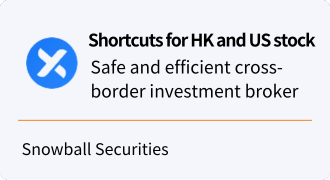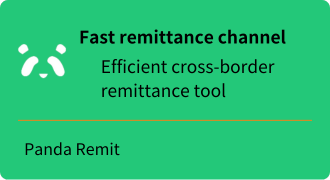A guide to understanding the U.S. stock delisting mechanism
[DISCLAIMER] This article is for educational and informational purposes only and does not constitute investment advice. Readers should consult with qualified financial professionals before making any investment decisions.
As a senior practitioner in the field of quantitative trading and financial self-media, I am often asked various questions about U.S. stock investments. Among them, the most mysterious and worrying for investors is the delisting mechanism of US stocks. Imagine you are shopping in a busy stock market supermarket, and suddenly you find that some once popular “commodities” are being removed from the shelves by the staff - this is a vivid depiction of stock delisting. Why do some companies get “taken off the shelves”? How does this affect our investments? Today, let's unravel the mysteries of this seemingly complex topic and begin an in-depth journey of discovery!
Ⅰ. What is U.S. stock delisting?
U.S. stock delisting is the process by which a publicly traded company's shares are removed from the stock exchange and no longer publicly traded. This may be the result of a company's active choice or it may be passive and enforced due to non-compliance with listing requirements.
Main reasons for delisting
- Deterioration of financial position: The company has been in the red for a long time or is insolvent.
- Undervalued share price: The share price is below the minimum price set by the Exchange for a long period of time.
- Insufficient market capitalization: The total market capitalization of the company is below the minimum standard required by the Exchange.
- Information Disclosure Violations: Failure to submit financial reports on time or major information disclosure violations.
- Corporate Governance Issues: Serious corporate governance deficiencies or violations.
- Mergers and Acquisitions or Privatization: The company is acquired or decides to go private.
Ⅱ. Comparison of Delisting Rules on Major U.S. Exchanges
The three major U.S. exchanges - the New York Stock Exchange (NYSE), Nasdaq, and the American Stock Exchange (AMEX) - have some subtle but important differences in their delisting rules. Understanding these differences is critical for investors.
- Minimum Stock Price Requirement
NYSE: average closing price of less than $1 for 30 consecutive trading days
Nasdaq: 30 consecutive trading days closing below $1
AMEX: average closing price below $0.20 for 30 consecutive trading days - Minimum market capitalization requirement
NYSE: average market capitalization below $15 million for 30 consecutive trading days
Nasdaq: Market capitalization below $35 million for 30 consecutive trading days
AMEX: Market capitalization below $5 million for 30 consecutive trading days - Shareholders' equity requirement
NYSE: Shareholders' equity less than $6 million and three consecutive fiscal years of losses
Nasdaq: Shareholders' equity less than $2.5 million
AMEX: Shareholders' equity less than $6 million and two consecutive fiscal year losses - Requirements for public float
NYSE: Public float of less than 600,000 shares or market capitalization of less than US$1.5 million
Nasdaq: Public ownership of less than 500,000 shares or market capitalization of less than US$1 million
AMEX: Public ownership of less than 500,000 shares or market capitalization of less than $1 million. - Minimum number of shareholders
NYSE: not less than 400
Nasdaq: no fewer than 300 or 450 total shareholders
AMEX: not less than 300 - Restoration of Compliance Period
NYSE: Normally granted 6 months for recovery, extendable to a maximum of 18 months
Nasdaq: Normally granted 180 days of recovery, renewable for an additional 180 days under certain circumstances
AMEX: Typically 6 months of recovery, extendable to a maximum of 12 months
In my career, I have come across a case where a biotech company was forced to move to AMEX because it was unable to maintain Nasdaq's minimum share price requirement. This is a reminder that we also need to consider the company's long-term growth prospects and financial position when choosing where to list.
Ⅲ. The process of delisting a U.S. stock
Although specific rules vary from exchange to exchange, US stock delisting usually follows the following basic process:
- Warning Notice: The exchange issues a delisting warning to the company, usually granting a 30-day correction period.
- Opportunity to Appeal: The company can appeal to the exchange to provide an improvement plan.
- Observation Period: If the complaint is successful, the company will enter an observation period, the duration of which varies by exchange.
- Final Decision: After the observation period, the Exchange makes a final decision.
- Delisting Enforcement: If the decision is to delist, the stock will be delisted and may be transferred to the over-the-counter market (e.g. OTC).
Ⅳ. Impact of delisting on investors
The impact of delisting on investors can be significant in the following ways:
- Decrease in liquidity: After a stock is delisted, trading becomes difficult and liquidity is significantly reduced.
- Loss of value: Delisting is usually accompanied by a significant drop in share price, and investors may suffer significant losses.
- Difficulty in obtaining information: After delisting, the company's disclosure requirements are reduced, making it difficult for investors to obtain accurate information.
- Increased transaction costs: The cost of trading in the OTC market is usually higher than that in the main board market.
As an example, in 2011, Kodak, once a brilliant company, fell into financial difficulties because it could not adapt to the wave of digitization. In January of that year, the New York Stock Exchange announced that it was delisting Kodak stock, and the share price plummeted from around $5 in 2010 to a few cents. Many longtime Kodak stock holders lost a lot of money.
Ⅴ. How can we avoid the risk of delisting?
As investors, we can take the following steps to minimize the risk of experiencing a delisted stock:
- Keep a close eye on financials: Check the company's financial reports regularly and pay attention to key indicators such as revenues, profits, and liabilities.
- Keep an eye on the stock price trend: Be wary of stocks that have fallen below the minimum requirements of the Exchange for a prolonged period of time.
- Keep an eye on company announcements: Keep abreast of major company announcements, especially those involving delisting risk.
- Diversify: Do not invest a large percentage of your capital in a single stock, especially those with delisting risk.
- Set Stop Loss: Set reasonable stop loss points for each investment to limit possible losses.
- Understand the rules of different exchanges: Focus on the appropriate key indicators depending on the specific exchange on which the company is listed.
Ⅵ. Investor Options after Delisting
In the unfortunate event of holding a delisted stock, investors usually have the following options:
- Continue to hold: Wait for possible reorganization or resumption of the company's trading.
- Trade in the over-the-counter (OTC) market: although less liquid, trading is still possible.
- Wait for company buyback: some privatized companies buy back their shares at a certain price.
- Recognize losses and get out in time: Sometimes a decisive stop loss may be the best option.
Ⅶ. Conclusion
U.S. stock delisting mechanism is an important means of market self-regulation, which is both a challenge and an opportunity for investors. Summarizing the key points of this article, I offer the following key recommendations for investors:
- Multi-dimensional monitoring: Regularly check whether the stocks in your portfolio meet the listing requirements of the exchanges on which they are listed, paying particular attention to share price, market capitalization and financial indicators.
- Set up an early warning system: Use your trading software to set up alerts to notify you when a stock is approaching delisting criteria.
- Pay attention to exchange differences: Remember that the delisting rules for NYSE, Nasdaq and AMEX are different, and adjust your monitoring strategy based on where the stock is listed.
- Take delisting warnings seriously: If a company receives a delisting warning from an exchange, be extra vigilant in assessing the likelihood that the company will improve its position.
- Have a contingency plan: For every investment, have a pre-determined exit strategy, including what to do if the risk of delisting increases.
- Take advantage of re-listing opportunities: Some delisted companies may return to the market through reorganization, etc. Stay tuned for investment opportunities that may arise.
- Take a rational view of the OTC market: The liquidity of delisted stocks will be significantly reduced when they are transferred to the OTC market, so it is prudent to assess the risk of continuing to hold them.
Remember, in the financial markets, information is power. Continuous learning, vigilance and adjusting your strategy in response to market changes are the only way to navigate through this challenging environment. I will continue to follow the latest developments in the delisting mechanism, feel free to share your insights or questions in the comments section so that we can improve our investment wisdom together.







